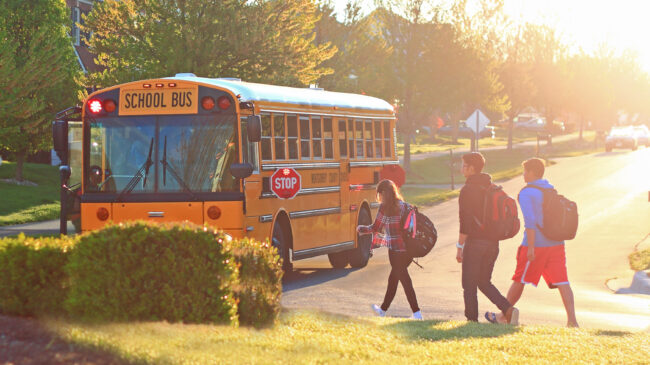So far this year, 18 states have passed legislation to allow families more choices and customization for their students’ K-12 education. From Pennsylvania to Montana, states have increased access to school choice by creating education savings accounts and expanding voucher and tax-credit scholarship programs. This wave of legislation has recently led a growing number of education reformers, including former Florida Gov. Jeb Bush, to dub 2021 as “the year of school choice.”
Reformers have long argued that education choice should be for everyone. But when looking at the current geographic distribution of charter school and private school scholarship-eligible students, it becomes clear that the target audience for these programs is largely kids in urban centers, who are most likely to be attending “failing” public schools.
Furthermore, despite years of school choice advocacy, students enrolled in private school choice programs represent only 1.2 percent of the nation’s K-12 population, and charter students make up only 7 percent of public K-12 enrollment.
To build on the momentum of recent legislative efforts, education choice advocates should update their vision for school choice. It is time to move beyond seeing school choice as primarily an escape hatch that enables kids to leave underperforming neighborhood schools.
The strategy of focusing on providing school choice for certain populations of students was perhaps best articulated by Manhattan Institute Senior Fellow Jason Riley in a 2014 interview, where he said charter schools and voucher programs “don’t need to be scaled up.” Using the example of the extraordinarily successful Knowledge Is Power Program (KIPP) charter school network, Riley said “we don’t need a KIPP in every neighborhood. I live in suburban New York City — we don’t need a KIPP up there, the public schools are just fine. We know where we need these schools.”
This belief limits the scope of choice programs as merely a remedy in areas where public schools are underperforming and suggests that the only way to advance education choice is to help kids get into a different school building.
Naturally, this pits schooling sectors against each other. It also leads families seeking an improved education for their children to believe that they will have meaningful choices only if they withdraw from their local school district and enroll in a private or charter school — which can be a big ask for many students and parents.
A better way forward for education reform is to give families control over their child’s education funds from the outset, whether they want to leave their current school or not.
Under this choice model, students would have access to some or all of the education dollars that the state already allocates to them for public school. Families could choose to spend these funds on not only private school tuition, but any number of other educational services and offerings.
A precedent for this kind of flexibility can be found in Idaho’s Advanced Opportunities program, where all students are given a lump sum of $4,125 when they reach seventh grade to be used to customize some of their education.
Students can draw down this one-time infusion of funding throughout middle and high school to pay for things like early college courses, Advanced Placement exam fees, professional certifications, or online courses from outside providers. For example, students could use some of their funds to enroll in an advanced language course offered at a neighboring district school, or for a software development boot camp offered by a private provider—all while continuing to attend their local school for their other credits.
Though founded only in 2016, Idaho’s program has proven remarkably popular and has been used by nearly 150,000 public school students since it started. Idaho’s Advanced Opportunities program can serve as a model for how to give families control over the education funds dedicated to their children without requiring that they withdraw from a particular school to unlock that money.
The school choice movement has empowered millions of families with education choices they otherwise would not have had. Now, the next step is to embrace education funding models that appeal to families that aren’t looking to leave their current school as much as they’re looking for a way to customize and have more control over their student’s education wherever they are at.
A version of this column previously appeared in the 74 Million.

